Our Dying Planet
.
We have reached a stage now is this earth's history where everything is dying. Our planet is groaning and aching under the burden of sin. The oceans and the air are polluted, and man, in his quest for power and wealth is destroying this world like never before in history. And if you read Revelation 11:18, you will see what God is going to do to those who destroy His beautiful creation.
Bees continue to die off in massive numbers. See our MASS BEE DIE OFF page for the list.
NOTE: → (During the Past 7 years) A die-off of 6.7 million bats has occured in America due to the "white-nose syndrome" ... Causing a 90% fall in bat populations. (Which has caused a "Potential Extinction" Event!) Link and here
Now why are these mass deaths of Bees and Bats a concern for the world? Because Honey Bees don't just make honey. They also do the vital job of pollinating the majority of the flowering crops we have, from which we get much of our fruits, vegetables and nuts ... including Beans, Soybean, Broccoli, Sprouts, Carrots, Cucumber, Onion, Parsnip, Squash, Tomato, Almonds, Cashew, Apple, Blackberry, Blueberry, Cacao, Coffee, Grapes, Kiwi, Mango, Pear, Raspberry, Alfalfa, Sesame, Sunflower ... Just to name a few. A major part of the human diet comes from insect-pollinated plants.
And what about the bats? Well, not only do they help in pollinating other foods we eat, like Bananas, Mangoes, Dates, Figs, Peaches, Cashews, Guava and Avocados. They also consume incredible amounts of insects that are agricultural pests. The millions of bats that have died due to disease over the past 6 years would have consumed HUNDREDS OF TONNES of insects (pests) in ONE YEAR. Add this to the struggling crops because of adverse weather and you will see the problem. BUT, this is just to show that we are living in the end times. Those of us who trust in and follow Christ Jesus need not worry, as our food will always be provided by our Great Saviour and Protector.
Researchers discover red tide is deadlier than first thought (Link). And what will the 2nd and 3rd plagues be? ... Revelation 16:3-4 ...'And the second angel poured out his vial upon the sea; and it became as the blood of a dead man: and every living soul died in the sea. And the third angel poured out his vial upon the rivers and fountains of waters; and they became blood.' (Note: The plagues have not yet begun)
According to reports, Russia has dumped enormous amounts of radioactive waste and nuclear reactors into Arctic Sea and America has dumped millions of munitions into the sea ... This is an example of what man is doing to the oceans, apart from all the massive oil leaks into the seas.
Revelation 11:18 ...'And the nations were angry, and thy wrath is come, and the time of the dead, that they should be judged, and that thou shouldest give reward unto thy servants the prophets, and to the saints, and them that fear thy name, small and great; and shouldest destroy them which destroy the earth.'
This is what God said to those who would destroy His creation. All throughout history, man could do little to the earth, apart from dig it with a shovel. But now in these last days, man is completely destroying God's creation through industry, war, over consumption, exploration, pollution, etc. And on this page, you will see the effect this has had on the world's creatures.
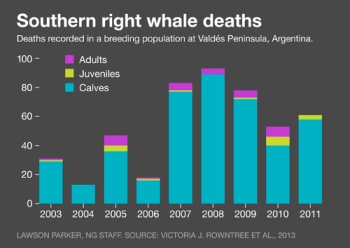 Argentina, sparking concerns among marine
scientists and conservation officials.
Argentina, sparking concerns among marine
scientists and conservation officials.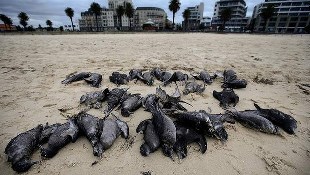 The short-tailed shearwater birds migrate 10,000 kilometres from the Bering Sea, between Alaska and Japan, to
Australian shores in late September to nest. Dr Lavers said they have eaten little on their journey and are exhausted by the flight.
The short-tailed shearwater birds migrate 10,000 kilometres from the Bering Sea, between Alaska and Japan, to
Australian shores in late September to nest. Dr Lavers said they have eaten little on their journey and are exhausted by the flight. (Translation) Fishermen from Primorsko to the village are propishteli of empty nets ... do not remember such a thing in my life, and for
decades to come off the sea. Fish suddenly disappeared - and bonito and bluefish, and mullet, and Zargana, everything.
(Translation) Fishermen from Primorsko to the village are propishteli of empty nets ... do not remember such a thing in my life, and for
decades to come off the sea. Fish suddenly disappeared - and bonito and bluefish, and mullet, and Zargana, everything.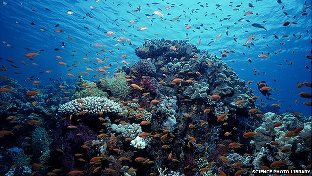 thought, a report says.
thought, a report says.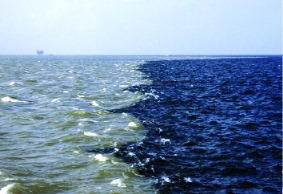 THIS IS A REPORT FROM 2008.
THIS IS A REPORT FROM 2008. that moment I knew the whole of Barnhart was down the tubes,
she said, blinking back tears. I went: 'dear God help us'. That was the first thought that came to mind.
that moment I knew the whole of Barnhart was down the tubes,
she said, blinking back tears. I went: 'dear God help us'. That was the first thought that came to mind. The rapid growth over the last few decades of these creatures is a sign of the planet's deteriorating marine health, according to expert Lisa-ann Gershwin.
Gershwin says that these enchanting and lovely invertebrates are in fact harbingers of the health of the oceans. They're an indicator that something is out of
balance, she told Bob McDonald, host of CBC Radio's Quirks & Quarks. So they're kind of the canaries in the coal mine, if you will. Except whereas a canary dies
when something's wrong, jellyfish flourish when something's wrong. (
The rapid growth over the last few decades of these creatures is a sign of the planet's deteriorating marine health, according to expert Lisa-ann Gershwin.
Gershwin says that these enchanting and lovely invertebrates are in fact harbingers of the health of the oceans. They're an indicator that something is out of
balance, she told Bob McDonald, host of CBC Radio's Quirks & Quarks. So they're kind of the canaries in the coal mine, if you will. Except whereas a canary dies
when something's wrong, jellyfish flourish when something's wrong. (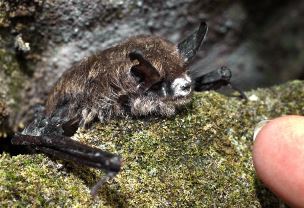 were hoping against hope this year that a fungus
killing bats in the Northeast might have traveled south without quite the lethal power. They have been disappointed. White-nose syndrome has claimed
more than 90 percent of bats in three sites around the region, the N.C. Wildlife Resources Commission announced this week, and has now been found in
seven Western North Carolina counties. (
were hoping against hope this year that a fungus
killing bats in the Northeast might have traveled south without quite the lethal power. They have been disappointed. White-nose syndrome has claimed
more than 90 percent of bats in three sites around the region, the N.C. Wildlife Resources Commission announced this week, and has now been found in
seven Western North Carolina counties. ( The number of Monarch butterflies making it to their winter refuge in Mexico dropped 59 percent this year, falling to the
lowest level since comparable record-keeping began 20 years ago, scientists reported.
The number of Monarch butterflies making it to their winter refuge in Mexico dropped 59 percent this year, falling to the
lowest level since comparable record-keeping began 20 years ago, scientists reported. A massive coral reef die-off is happening all over the world. In Australia, more than half of the Great Barrier Reef has died and disappeared
during the past 27 years, according to a study by scientists. (
A massive coral reef die-off is happening all over the world. In Australia, more than half of the Great Barrier Reef has died and disappeared
during the past 27 years, according to a study by scientists. (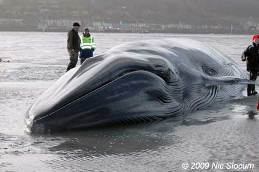 were 25 strandings recorded in 2011 alone,
prompting a long term investigation into the health of the whale population. A lot of juvenile whales are found washed up on beaches, giving an
indication that these animals are either starving or are diseased. (
were 25 strandings recorded in 2011 alone,
prompting a long term investigation into the health of the whale population. A lot of juvenile whales are found washed up on beaches, giving an
indication that these animals are either starving or are diseased. ( New research suggests that the number of Sharks have fallen by 90 percent and could be heading for extinction, and yet millions are killed
every year for asian delicacies. The more we study sharks, the worse the picture becomes, and the stronger the case becomes for conservation efforts. (
New research suggests that the number of Sharks have fallen by 90 percent and could be heading for extinction, and yet millions are killed
every year for asian delicacies. The more we study sharks, the worse the picture becomes, and the stronger the case becomes for conservation efforts. ( krill as their main source
of their diet. The tiny shrimp-like creature attaches to chunks of ice in the Antarctic ocean. But as the ice melts, the krill population
dwindles. (
krill as their main source
of their diet. The tiny shrimp-like creature attaches to chunks of ice in the Antarctic ocean. But as the ice melts, the krill population
dwindles. ( Disease continues to ravage bat, bee and amphibian populations, with many species at risk of extinction. It appears that many species
are under an immense amount of stress, allowing opportunistic diseases to take hold. (
Disease continues to ravage bat, bee and amphibian populations, with many species at risk of extinction. It appears that many species
are under an immense amount of stress, allowing opportunistic diseases to take hold. (